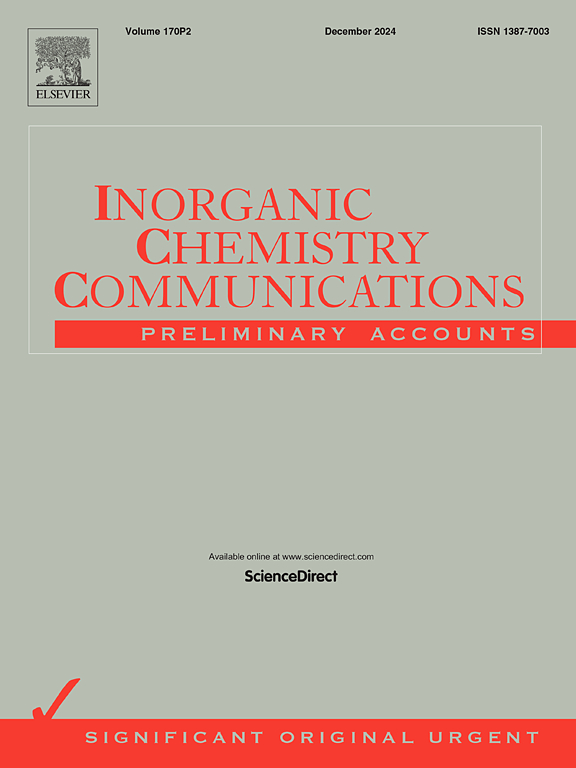Surfactant-driven synthesis of sheet-like Ni3S2-embedded S-doped FeCo LDH electrocatalyst for superior oxygen evolution performance: Exploring the role of surfactants in performance and stability
IF 5.4
3区 化学
Q1 CHEMISTRY, INORGANIC & NUCLEAR
引用次数: 0
Abstract
Although the splitting approach based on electrochemical interactions is a common way to produce hydrogen gas, the slow kinetics of the oxygen evolution reaction (OER) considerably restricts the total energy conversion performances. Here, a highly active and durable Ni3S2-embedded S-doped FeCo layered double hydroxide supported on nickel foam (Ni3S2@SFC-LDH@NF) electrocatalyst was successfully synthesized through a surfactant-driven synthesis approach. The surfactant type was researched to boost the morphology and electrocatalytic performance using cationic (e.g., cetyltrimethylammonium bromide (CTAB)), anionic (e.g., sodium dodecyl sulfate (SDS)), and neutral (e.g.,polyvinylpyrrolidone (PVP)) surfactants. Among these surfactants, the PVP-based electrocatalyst (EC-PVP) showed a superior OER activity, achieving a lowest overpotential of 141 mV at current density of 10 mA/cm2. Furthermore, EC-PVP has excellent long-term stability with no degradation even after 27.8 h at 10 mA/cm2. The proposed article emphasizes the crucial impact of surfactant selection on the structure and efficacy of electrocatalysts.

表面活性剂驱动合成片状ni3s2包埋s掺杂FeCo LDH电催化剂的优异析氧性能:探讨表面活性剂在性能和稳定性中的作用
虽然基于电化学相互作用的分裂方法是产生氢气的一种常用方法,但析氧反应(OER)的缓慢动力学极大地限制了总能量转换性能。本文通过表面活性剂驱动的合成方法,成功合成了一种高活性、耐用的嵌入ni3s2的s掺杂FeCo层状双氢氧化物,负载在泡沫镍(Ni3S2@SFC-LDH@NF)电催化剂上。采用阳离子(如十六烷基三甲基溴化铵(CTAB))、阴离子(如十二烷基硫酸钠(SDS))和中性(如聚乙烯吡罗烷酮(PVP))表面活性剂对表面活性剂的类型进行了研究,以提高其形貌和电催化性能。在这些表面活性剂中,基于pvp的电催化剂(EC-PVP)表现出优异的OER活性,在电流密度为10 mA/cm2时,过电位最低为141 mV。此外,EC-PVP具有优异的长期稳定性,即使在10 mA/cm2下27.8 h也不会降解。本文强调了表面活性剂的选择对电催化剂的结构和效果的重要影响。
本文章由计算机程序翻译,如有差异,请以英文原文为准。
求助全文
约1分钟内获得全文
求助全文
来源期刊

Inorganic Chemistry Communications
化学-无机化学与核化学
CiteScore
5.50
自引率
7.90%
发文量
1013
审稿时长
53 days
期刊介绍:
Launched in January 1998, Inorganic Chemistry Communications is an international journal dedicated to the rapid publication of short communications in the major areas of inorganic, organometallic and supramolecular chemistry. Topics include synthetic and reaction chemistry, kinetics and mechanisms of reactions, bioinorganic chemistry, photochemistry and the use of metal and organometallic compounds in stoichiometric and catalytic synthesis or organic compounds.
 求助内容:
求助内容: 应助结果提醒方式:
应助结果提醒方式:


